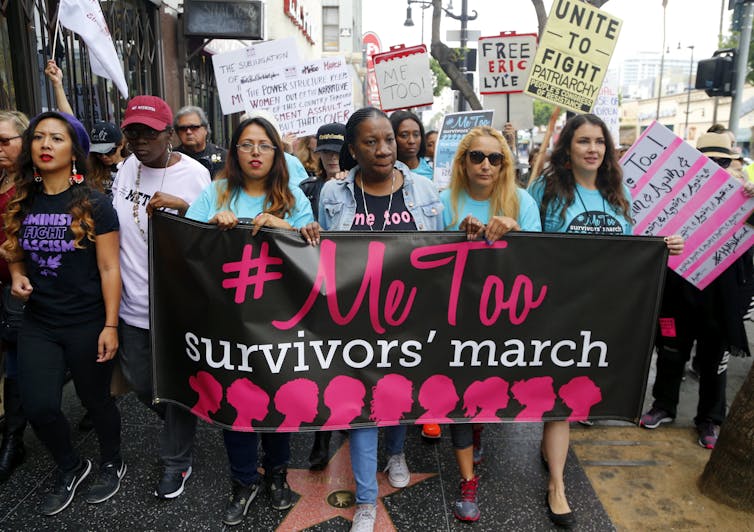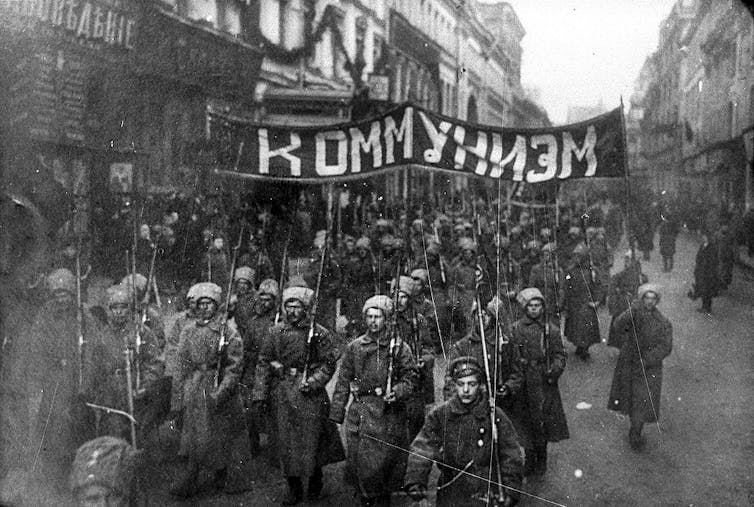
Many of history’s revolutions and social movements have emerged with little or no warning. Even those leading the charge are often taken aback, even stunned, when they succeed.
Alexis de Tocqueville reported that no one foresaw the French Revolution in 1789. Vladimir Lenin was amazed by the success and speed of the Russian Revolution over a century later. And few predicted that a Tunisian man’s self-immolation would spark revolutions across the Arab world in 2010.
Why do social movements and revolutions happen? Why are they so hard to anticipate? Why does social change seem to come out of nowhere?
For the last two decades, I have spent a lot of time on those questions, which I try to address in my new book, “How Change Happens.” My aim here is to offer some glimpses of what I have learned – and, in the process, to help explain #MeToo.

Solving the puzzle
Three factors with admittedly awkward names seem to play a big role: preference falsification, diverse thresholds and interdependencies. When the three are taken together, the difficulty of anticipating social movements becomes less puzzling.Preference falsification exists when people conceal, or do not reveal, what they actually think and prefer. They might say they like the current situation when they despise it. They might silence themselves. Their friends and neighbors might have no idea what they actually think. To that extent, people live amidst what is called “pluralistic ignorance,” in which they do not know about the preferences of others.
Diverse thresholds mean that different people require different levels of social support before they will rebel or say what they actually think.
Some people might require no support at all; they are rebels by nature. They might be courageous, committed, angry or foolhardy. Call them the “zeroes.” They might well turn out to be isolated; no one may join them, in which case they might look radical, self-destructive or even crazy.
Other people might require a little support. They will not speak out or take action unless someone else does, but if someone does, they are prepared to rebel as well. Call them the “ones.”
Others might require more than a little; they are the “twos.” The twos will do nothing unless they see the zeroes and the ones rebelling. But if they do, they will rebel as well. The twos are followed by the threes, the fours, the tens, the hundreds and the thousands, all the way up to the infinites – defined as people who will not rebel or oppose the status quo or the regime, no matter what.
Interdependencies point to the fact that the behavior of the ones, the twos, the threes and so forth will depend crucially on who, if anyone, is seen to have done what.
Suppose that the zeroes go first, then the ones, then the twos, then the threes and so on. Or perhaps vice-versa. Or maybe it is all random. Under imaginable assumptions, a rebellion will occur, but only given the right distribution of thresholds and the right kind of visibility.
If the ones see the zeroes, they will rebel, and if the twos see the ones, they, too, will rebel, and if the threes see the twos, they will join them. If the conditions are just right, almost everyone will rebel.
But it is important to see that the conditions have to be just right. Suppose that there are no zeroes, or that no one sees any zeroes. If so, no rebellion will occur. If there are few ones, no rebellion will occur and the status quo or the regime is likely to be safe. If most people are tens or hundreds or thousands, the same is true, even if there are some ones, twos, three, fours and so forth.
The case of #MeToo
Consider #MeToo in this light. All three conditions are met.First, with respect to sexual assault and sexual harassment, preference falsification has run rampant. Victims have silenced themselves. In many cases, they have said that all is or was well when it is or was anything but.
In the case of #MeToo, however, it might be better to speak of experience falsification. That is, victims have also been silent about or falsifying their experiences to others, including employers. Falsifying one’s experiences can be especially searing.
Second, different women had and have different thresholds for disclosing their experiences and their judgments – that is, they need varying numbers of others to speak out first before they are willing to open up as well. Some women are ones, others are twos, others are tens and others are hundreds or thousands.
For one reason or another, some may be infinites. They might be frightened, have some kind of loyalty to the perpetrator, not want their lives to be disrupted or cherish their privacy.
Some might not have clarity on what their thresholds are. They – and we – learn about it after the fact. Consider the following words from Beverly Young Nelson, who in 2017 accused Republican Senate candidate Roy Moore of having sexually assaulted her in 1977:
“I thought that I was Mr. Moore’s only victim. I would probably have taken what Mr. Moore did to me to my grave, had it not been for the courage of four other women that were willing to speak out about their experiences with Mr. Moore. Their courage has inspired me to overcome my fear.”
Lighting the flame
Finally, social interactions are, and continue to be, crucial to #MeToo.Under certain conditions, the threes and the fours would silence themselves, because the ones and the twos were silent too. But #MeToo has benefited from the visibility of those who spoke out and the multiple interactions made possible by social media.
Shortly after the Harvey Weinstein sexual misconduct scandal broke in October 2017, actor and activist Alyssa Milano sent a tweet to her followers asking them to share their stories of harassment or assault by replying “me too.” Within 24 hours, 45 percent of all U.S. Facebook users had friends in their networks who had posted “me too.”
Once people like Milano and Lena Dunham spoke out, others – we might think of them as the threes and the fours and the fives – felt safer or emboldened.
That’s what happened, and it is happening all over the world. And when social movements take off and succeed, that’s often why.
Cass Sunstein, University Professor, Harvard University
This article is republished from The Conversation under a Creative Commons license. Read the original article.